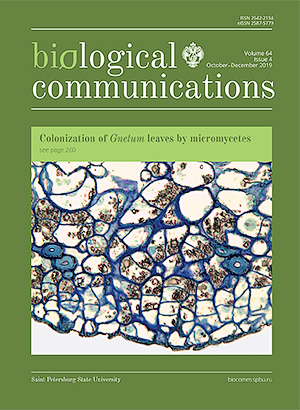Migration behaviour of fluoride in contaminated soils near ammophos production plant: laboratory studies
DOI:
https://doi.org/10.21638/spbu03.2019.406Abstract
Fluoride contamination of irrigated alkaline soils (Irragric Anthrosols) is a common problem in the areas of vast cotton production in Uzbekistan. Large number of laboratory measurements using corresponding models allows deeper studying the fluoride mobility in contaminated soil in the vicinity of Ammophos production factory. In a series of column experiments the migration ability of fluoride was studied in Irragric Anthrosols of different particle size distribution and four different experiments using near neutral and acidic washing water in the low, moderate and highly contaminated soils. It has been established that studied soils, located in the zone of airborne emissions from the Ammophos production plants, have a weak fluoride-holding capacity. The intensity of fluoride migration was conditioned by the initial level of soil contamination. Repeated simulated irrigation of the soil didn’t result in complete removal of fluoride. At low contamination level (3.5 mg F/kg soil) on sandy-loam soil, concentration of fluoride increased with increasing of the volume of leaching moisture. With medium contamination level (6.1 mg F/kg soil) on a loamy soil, the average leaching rate was near zero throughout the measurement interval. At high contamination level (17.5 mg/kg) on heavy textured soil, the increase in the concentration of fluoride in the eluates was observed throughout the entire study interval and posed a threat of ground water contamination.
Keywords:
soil contamination, fluoride, migration, irrigation, modelling
Downloads
References
Downloads
Published
How to Cite
License
Articles of Biological Communications are open access distributed under the terms of the License Agreement with Saint Petersburg State University, which permits to the authors unrestricted distribution and self-archiving free of charge.





